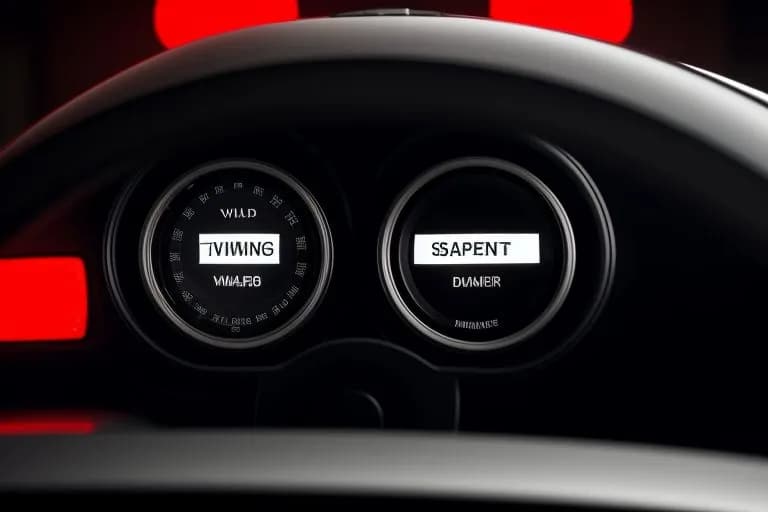Car Window Tinting: Essential Facts to Understand
Explore everything you need to know about car window tinting, including types, laws, costs, and tips to make an informed decision.
Car Window Tinting: 7 Things You Need to Know
Car window tinting is a popular choice for enhancing privacy, reducing glare, and improving the aesthetic appeal of vehicles. However, there are essential factors every car owner should know before tinting their windows. This guide covers everything from types of tint to laws, costs, and maintenance tips.
Window Tint Quick Tips
- Check state-specific tinting laws before installation.
- Choose a reputable installer for quality assurance.
- Understand the types of tint available and their benefits.
- Factor in costs, ranging from $50 to $800 depending on the type and quality.
- Learn about penalties for violating tint laws in your area.
1. What Is Window Tint?
Window tint is a thin laminate film applied to a car's glass surfaces to reduce heat, block harmful UV rays, and add a stylish appearance. Available in various materials like ceramic, carbon, and dyed film, each type offers unique benefits.
2. States Determine Tinting Laws
Window tinting laws vary significantly across states in the U.S. These laws specify permissible levels of Visible Light Transmission (VLT), which determine how dark your tint can be. Ensure you comply with local regulations to avoid penalties.
Check Out This Sample of State Laws:
| State | Front Windows VLT | Rear Windows VLT |
|---|---|---|
| California | 70% | Any |
| Florida | 28% | 15% |
| Texas | 25% | Any |
3. Window Tint Law Exemptions
Some states offer medical exemptions for window tinting. Conditions like photosensitivity may qualify drivers for darker tints than typically allowed. Always carry the necessary documentation to avoid fines.
4. Window Tinting Penalties
Violating window tinting laws can result in fines ranging from $50 to $500 depending on the state. Repeat offenses may lead to increased penalties or mandatory tint removal.
5. Car Tinting Installation Options and Cost
The cost to tint car windows varies based on the type of tint and the installer. While DIY kits can be as low as $50, professional installation ensures longevity and quality, typically costing between $200 and $800.
How Long Does Window Tint Last?
Most window tints last between 5 to 10 years, depending on the quality and maintenance. Ceramic tints generally last the longest, while dyed films may fade within 3 to 5 years.
6. Different Kinds of Tint
Window tint comes in several types, each with its own advantages and disadvantages. Here's an overview:
Ceramic Tint
Pros:
- Excellent heat and UV blocking.
- Non-metallic, so it doesn’t interfere with signals.
Cons:
- Higher cost compared to other tints.
Carbon Tint
Pros:
- Durable and fade-resistant.
- Provides a matte finish.
Cons:
- More expensive than dyed film.
Metallic Window Tint
Cons:
- Can interfere with electronic signals.
Hybrid Window Tint
Pros:
- Combines durability with affordability.
Cons:
- Not as advanced as ceramic options.
Dyed Film
Pros:
- Affordable and provides a sleek look.
Cons:
- Fades over time and offers limited heat reduction.
7. Removing Window Tint Film
If your tint is old or damaged, removing it is a straightforward process:
Steps to Removing Window Tint
- Heat the tint with a steamer or hairdryer.
- Peel the tint starting from one corner.
- Use a cleaner to remove adhesive residue.
Detachable Sun Shades
Detachable sun shades offer a temporary solution for reducing glare and heat. They’re affordable, easy to install, and legal in all states.
Benefits of Car Window Tinting
Car window tinting offers several advantages beyond aesthetics. It improves driving comfort, protects passengers, and enhances vehicle security. Here's an overview of key benefits:
- Heat Reduction: Tints block significant amounts of solar heat, making your car cooler and reducing the need for air conditioning.
- UV Protection: High-quality tints can block up to 99% of harmful UV rays, safeguarding skin and preventing interior damage.
- Privacy: Tinted windows offer enhanced privacy, making it harder for outsiders to see inside your vehicle.
- Glare Reduction: Reducing glare from sunlight and headlights enhances driving visibility and safety.
How to Choose the Right Tint Percentage
Choosing the right tint percentage depends on your preferences, state laws, and the purpose of tinting. Here's a quick breakdown:
| Tint Percentage | Visibility | Best For |
|---|---|---|
| 50% | High visibility | Minimal heat and glare reduction |
| 35% | Balanced visibility and privacy | Daily drivers seeking moderate protection |
| 20% | Reduced visibility into the car | Enhanced privacy and UV protection |
| 5% | Almost no visibility | Maximum privacy, often used for limousines |
Consider consulting a professional installer to determine the best option for your needs.
Environmental Impact of Window Tinting
Car window tinting contributes to environmental benefits by improving energy efficiency. Here's how:
- Reduced Fuel Consumption: By keeping the car cooler, tinting reduces the need for air conditioning, leading to lower fuel consumption.
- Longevity of Interior Materials: By blocking UV rays, tints prevent the fading and cracking of upholstery, reducing waste and replacement needs.
- Energy Conservation: High-performance tints can contribute to less energy usage in vehicles, indirectly reducing carbon emissions.
For a sustainable choice, opt for eco-friendly tinting films that are non-toxic and recyclable.
Comparing DIY vs. Professional Window Tinting
Deciding between DIY and professional installation depends on your budget, skills, and desired results. Here's a comparison:
| Aspect | DIY Tinting | Professional Tinting |
|---|---|---|
| Cost | Lower ($50–$150) | Higher ($200–$800) |
| Skill Level | Requires patience and precision | Performed by trained experts |
| Quality | Varies depending on expertise | Consistently high quality |
| Warranty | Often not available | Typically includes a warranty |
While DIY may save money, professional services ensure a flawless finish and longer-lasting results.
Maintaining Tinted Windows
Proper maintenance is crucial for extending the lifespan of your window tint. Here are some tips:
- Wait Before Cleaning: Avoid cleaning newly tinted windows for at least 7 days to allow the film to set.
- Use Non-Ammonia Cleaners: Ammonia-based products can damage the tint. Use a gentle cleaner and a soft cloth instead.
- Avoid Sharp Objects: Prevent scratches by keeping sharp items away from the windows.
- Regular Inspections: Check for bubbling, peeling, or discoloration and address issues promptly to prevent further damage.
Following these tips will keep your car’s tint in optimal condition for years to come.
Our Services
Window Sticker
Print window sticker for your vehicle
VIN Decoder
Decode any vehicle manufacturer
Classic VIN Lookup
Decode VINs for classic and vintage vehicles
License Plate Lookup
Search license plate information
VIN Check
Decode any vehicle in US states
Build Sheet by VIN
Get detailed build sheet for your vehicle
Dealers
Unlimited vehicle history reports
Paint Code by VIN
Find your vehicle's exact paint color code
VIN Explorer
Explore detailed vehicle information by VIN
Warranty Check
Check warranty information by VIN
Vehicle Recalls
Understanding Vehicle Recalls: A Complete Guide

Ethan J. Caldwell
Ethan James Caldwell is a graduate of George Washington University (GW). Born and raised in Washington, Ethan has had a lifelong passion for cars, motorcycles, and all things automotive. From a young age, he was captivated by the mechanics, design, and culture surrounding vehicles, which eventually inspired his career. Ethan currently drives a silver 2005 Honda Accord, a testament to his appreciation for reliable and timeless vehicles.
Frequently Asked Questions
Car window tinting involves applying a thin film to vehicle windows to block UV rays, reduce glare, and enhance privacy.
Costs range from $50 for DIY kits to $800 for professional installations, depending on the type and quality of tint.
Yes, each state has specific laws that dictate the permissible levels of tint. Check local regulations before tinting.
Popular types include ceramic, carbon, metallic, hybrid, and dyed film, each offering unique benefits and drawbacks.
Yes, window tinting can be removed using heat and adhesive cleaners. Professional removal is recommended for best results.
Our Blog Articles
Discover insights about vehicle history, maintenance, and buying guides

VIN Swap Meaning: What You Need to Know
Understand the VIN swap meaning, its risks, and how to protect yourself from fraud. Get the facts on swapped VINs and how to check vehicle history.

ABS and Traction Control Light On: What You Need to Know
Is your ABS and traction control light on? Learn the common causes, what to do, and how to keep your vehicle safe. Get expert advice on ChassisVIN.com.

Check Cars Owner: Find Owner Information Easily
Need to check cars owner? Use ChassisVIN.com to quickly find owner information, vehicle history, and more. Get peace of mind before buying or selling a car.